More deaths, more traffic. How Highway 50 construction in Sacramento went horribly wrong
Just after 9 a.m. on a Wednesday, a sign before the Stockton Boulevard exit warned Sacramento drivers that the speed limit was 55 mph in the construction zone.
Below that sign, little orange lights taunted commuters on westbound Highway 50 with their actual speed: 8 mph.
Construction for the “Fix 50” project has slogged on between Watt Avenue and Interstate 5 since 2021, leading not only to traffic delays and associated headaches, but also to severe crashes and deaths.
The construction zone — which has been in various places in the middle of the freeway throughout the project — funnels traffic into two narrower, two-lane streams with no shoulders. Though rush hour crowding slows drivers down to safer speeds, the setup still allows cars to vastly exceed the 55 mph limit when less traffic clogs the highway.
Fix 50 will add a carpool lane going in each direction. Along 7-and-a-half miles of highway, workers are replacing crumbling pavement that’s more than 50 years old. They’re raising the vertical clearance at seven over-crossings, and they’ve added sound walls between Stockton Boulevard and 65th Street. Caltrans estimates the project costs will tip just over $471 million.
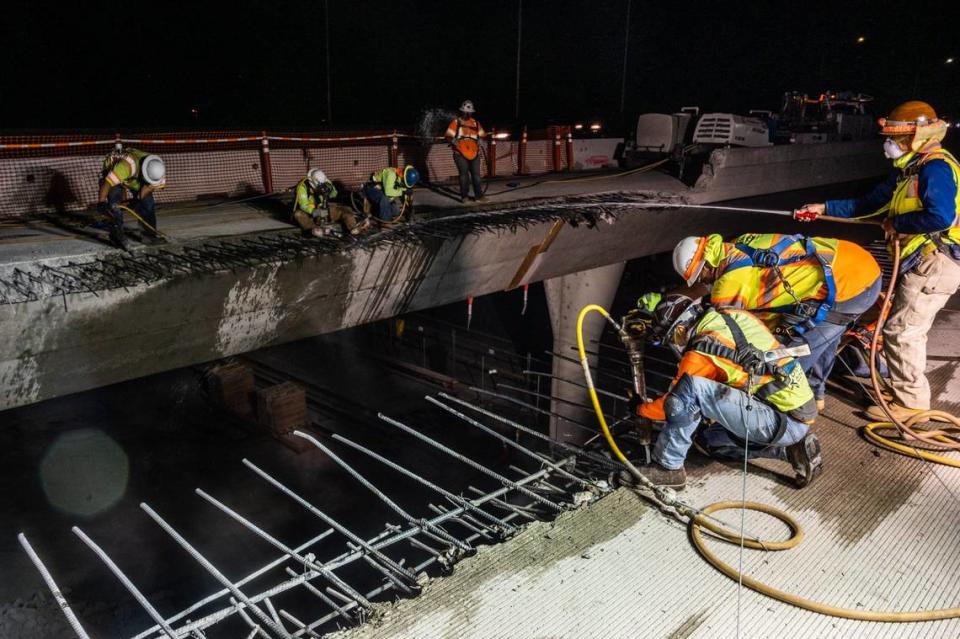
And the non-monetary costs have been unfathomable for some people in the capital region. After construction started in March 2021, fatal wrecks on the freeway ticked up.
Ronald Fitzgerald is among the casualties. A 1971 Fiat stalled on westbound Highway 50 on May 12, 2021, and the driver couldn’t pull off the highway because the construction had left no shoulder. Fitzgerald — a plumber, a husband and a father — collided with the stationary car while riding his motorcycle.
Fitzgerald quickly died of his injuries. He was 53.
The road needs a new surface to stay safe (for a freeway). In the meantime, the construction project has caused all this suffering — from the small indignities of traffic to the profound grief borne by families like Fitzgerald’s — for a freeway-widening project researchers say has a futile goal of reducing congestion and greenhouse gas emissions.
Highway construction led to more crashes
The number of collisions on Highway 50 spiked after construction started. The number, according to data from the California Highway Patrol, has since settled.
CHP data show that 12 people died in collisions on Highway 50 from the Sacramento River to Watt Avenue over the 22 months between March 2021 and December 2022. By comparison, eight people died on that stretch of road from January 2018 through February 2021, 38 months.
Five people were killed in 2021 and seven people were killed in 2022. Fitzgerald was among the dead, crashing near 59th Street.
Between March 2021 and December 2021, about 960 wrecks occurred on Highway 50 between the Sacramento River and Watt Avenue — more than double the number of wrecks during the same period in 2020 and more than 30% higher than the number of wrecks during the same period in 2018 or 2019.
The jump in wrecks was entirely due to accidents on westbound Highway 50.
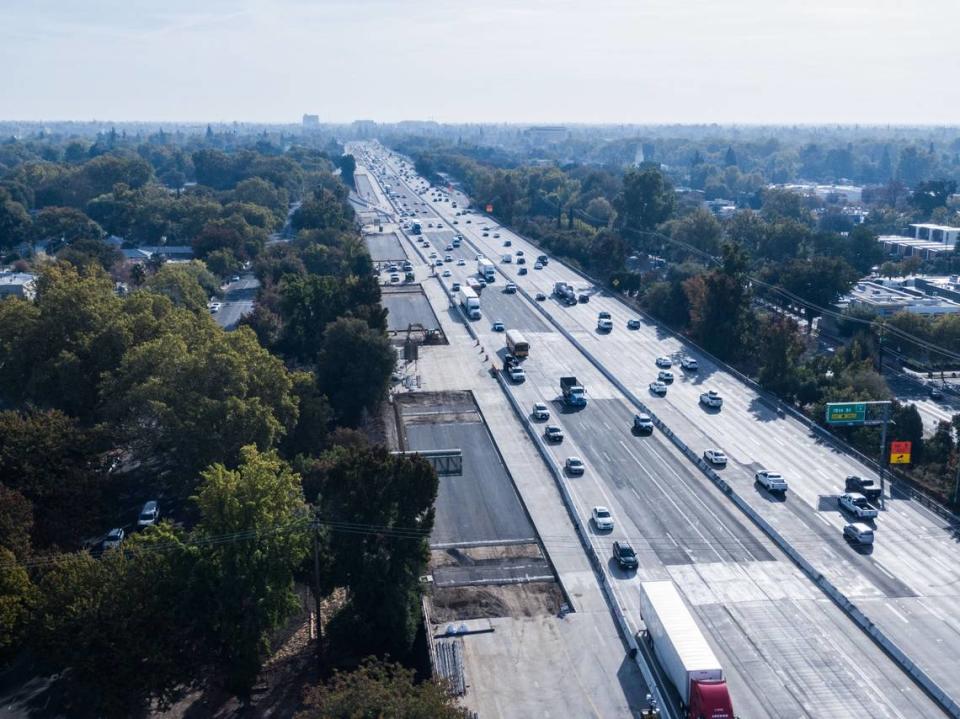
However, the pace of misery has slowed. Since December of 2021, collisions have averaged about 68 per month on that stretch of Highway 50. That’s similar to the average number of collisions each month in 2018 and 2019.
Excluding wrecks that led to someone’s death, CHP data show there were 35 collisions from March 2021 through December 2022 that resulted in severe injuries, for an average of 1.6 crashes per month. Before construction began, there were 45 collisions with severe injuries on that stretch of road from January 2018 through February 2021, an average of 1.2 wrecks per month.
Dennis Keaton, a representative for Fix 50, said that Caltrans has taken steps to make the construction zone safer: “We lowered the speed limit from 65 mph to 55 mph. We contract with the CHP to provide additional officers in the work zones during work hours. We have regular meetings with the CHP to review traffic incidents and traffic safety elements within the project.”
To a certain degree, human suffering is expected as one of the costs of “fixing” a freeway, said Susan Handy, a UC Davis professor who studies transportation. Like many other costs, it’s often elided.
“We don’t adequately account for the pain that we all experience during construction,” Handy said. She cited the increase in crashes and deaths, as well as the severe congestion. “The analysis that Caltrans and others are doing overstates the benefit of widening the freeway. And data analysis is also understating the environmental impacts of widening the freeway.”
Keaton said that the average annual daily traffic “varies from about 167,000 vehicles near Watt Avenue to about 224,000 vehicles near 15th Street.” Hundreds of thousands of people, sometimes traveling slower than they would by bicycle.
New carpool lanes are futile, research shows
From her Tahoe Park home just south of Highway 50, Patsy Chavez said that the new soundwall installed as part of Fix 50 had improved her life. The rush of the freeway is now more muffled than it was before. She said, “I can sleep with my window open.”
Even though the pavement on the freeway has received touch-ups over the past half-century, fully replacing the pavement is, Caltrans has said, a necessity.
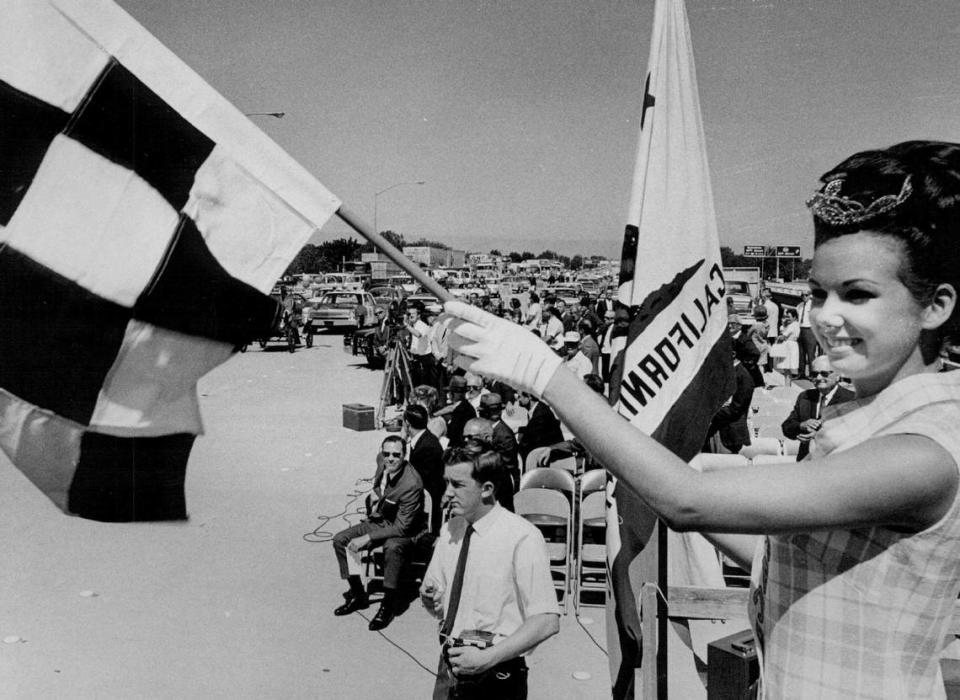
However, it is debatable whether the agency needed to add new carpool lanes. The aim, said Caltrans’ Keaton, was partly to “improve general traffic operations by reducing congestion and travel time.” The Fix 50 website says the new lanes will “help reduce emissions to tackle climate change.”
But even the state recognizes that this mission is flawed. Under then-secretary David S. Kim, the California State Transportation Agency — which oversees Caltrans — finalized a climate action plan in July 2021.
“Research over the past several decades has demonstrated that highway capacity expansion has not resulted in long-term congestion relief and in some cases has worsened congestion,” the plan states. “As a result, we cannot continue the same pattern of highway expansion investment in California and expect different results.”
Handy, a professor in UC Davis’ Department of Environmental Science and Policy, said that research has consistently shown that adding lanes only temporarily reduces traffic; in the long-term, more lanes just lead to more cars on the road and thus, more greenhouse gas emissions. As scholars wrote in a 2011 article in American Economic Review, there is a “fundamental law of highway congestion: people drive more when the stock of roads in their city increases.”
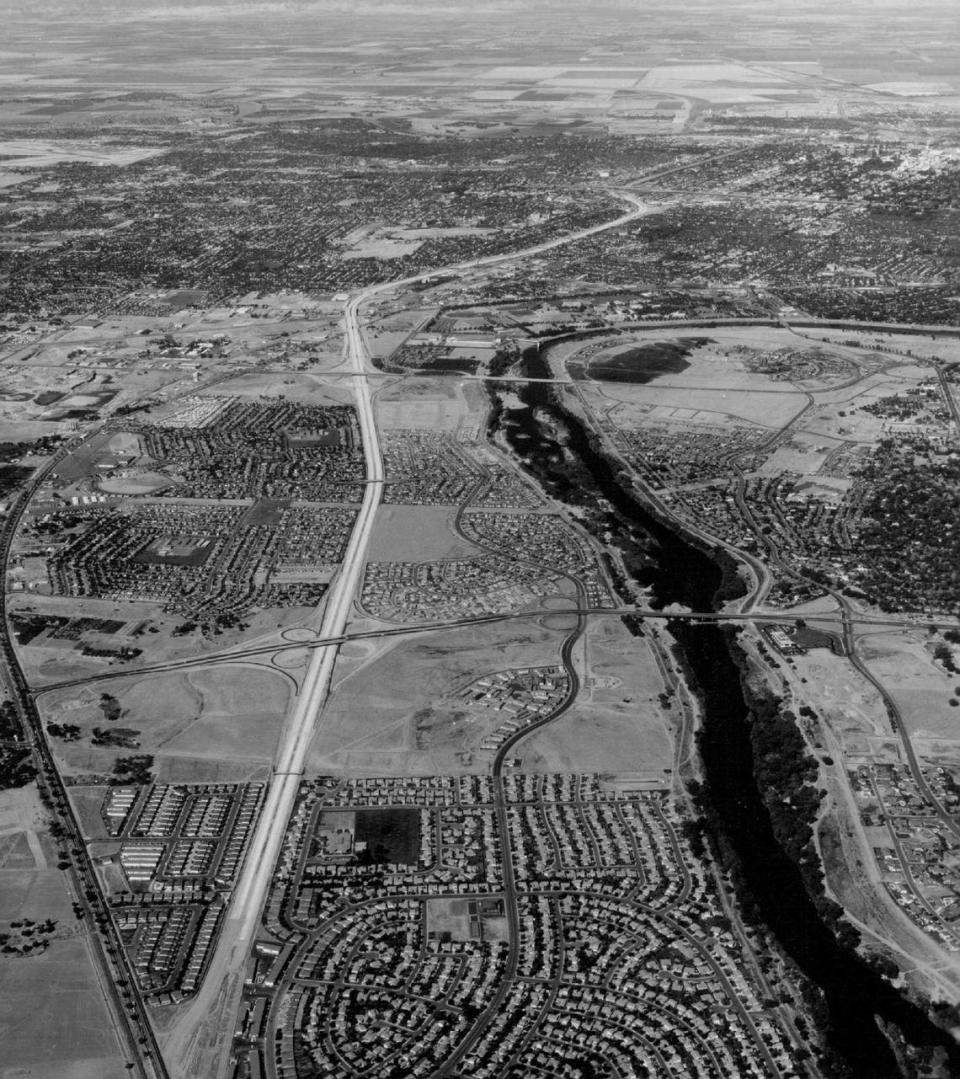
“We have a lot of very robust evidence that is very consistent in showing that when highway capacity is expanded, the vehicle miles of travel also expands,” Handy said. Adding lanes “doesn’t work because of human behavior. Because when the conditions in the roadway system change, we as individuals start to make different choices about our daily travel.”
Widening freeways has failed repeatedly, Handy said, over the course of “at least a century.” She cited 1920s Los Angeles, when officials started adding lanes.
“Even back then, the thought was, ‘Well, we just need to widen the roads,’” Handy said. “Some people recognize that that wasn’t going to work: that every time the roads got widened, the traffic only increased. But that idea just didn’t catch on. And what did catch on is the idea that continuing to expand the highway system is a way to build our way out of congestion.”
In Sacramento, too, the highway has already been widened, though not in its current iteration. In May 1956, The Sacramento Bee reported that Folsom Boulevard — which was Highway 50 at the time — had been recommended for “four-laning,” a few years after the city dismantled its streetcar system. That same year, The Sacramento Union reported, the State Highway Commission also heard a recommendation for a new “cross-town freeway” — the current Highway 50.
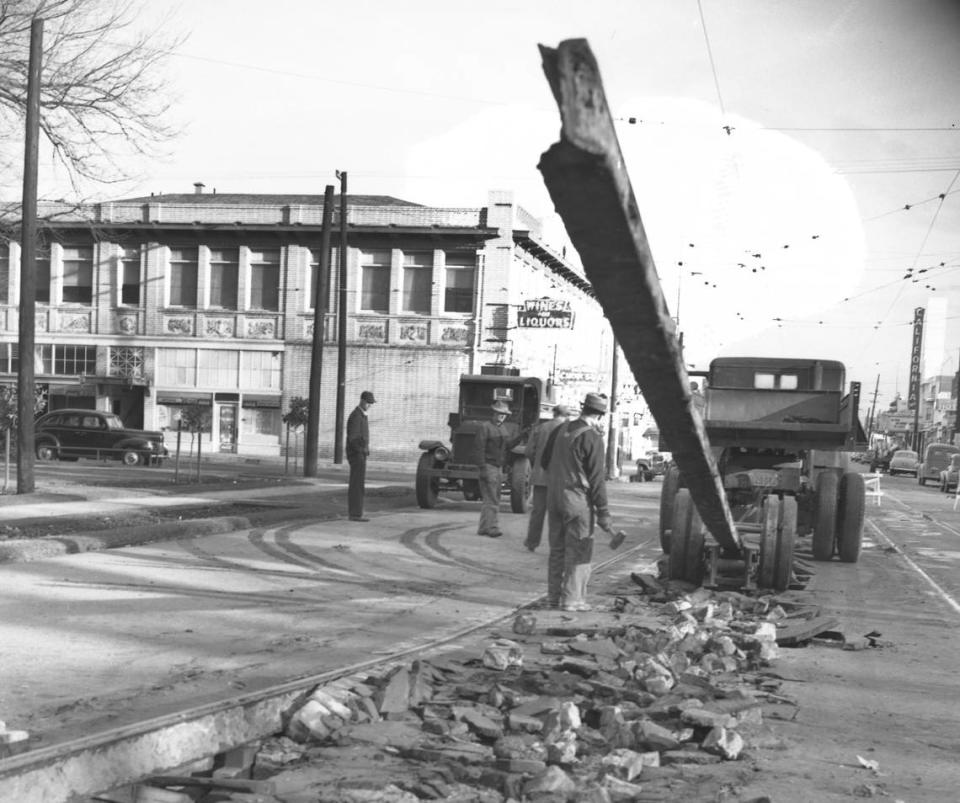
A Sacramento Union editorial complained in November 1950, “Every highway which feeds Sacramento is a two-lane highway, incapable of accommodating modern-day traffic. … This stranglehold upon Sacramento — six narrow highways — must be broken, even if it takes a revolution to do it.”
Though the mid-20th-century was a more freeway-friendly time, the construction of Highway 50 did meet resistance. The Sacramento Union reported that the Southside Improvement Club begged City Council to reconsider the freeway in April 1959, saying the highway “would be a ‘concrete curtain’ that would divide the city, cause delay and inconvenience, and (the) loss of two blocks of Southside Park.”
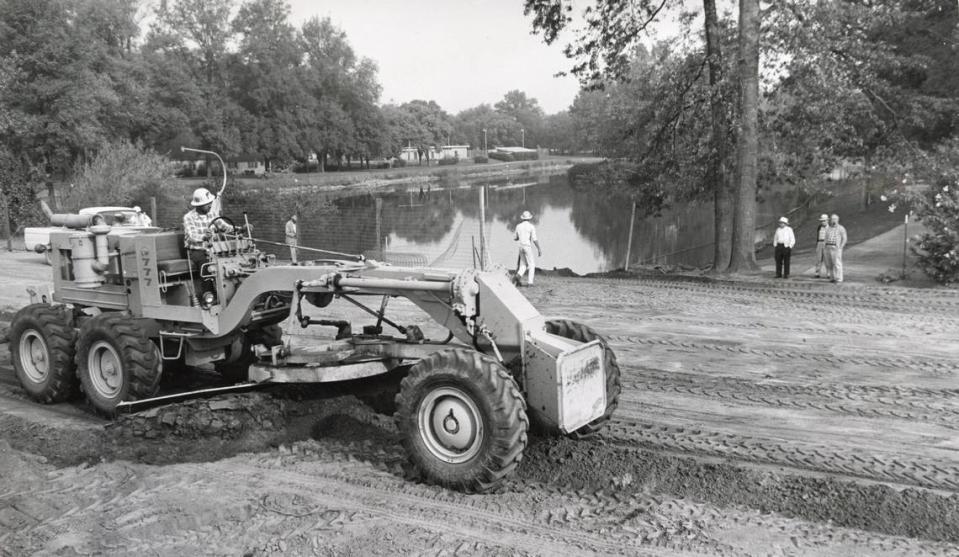
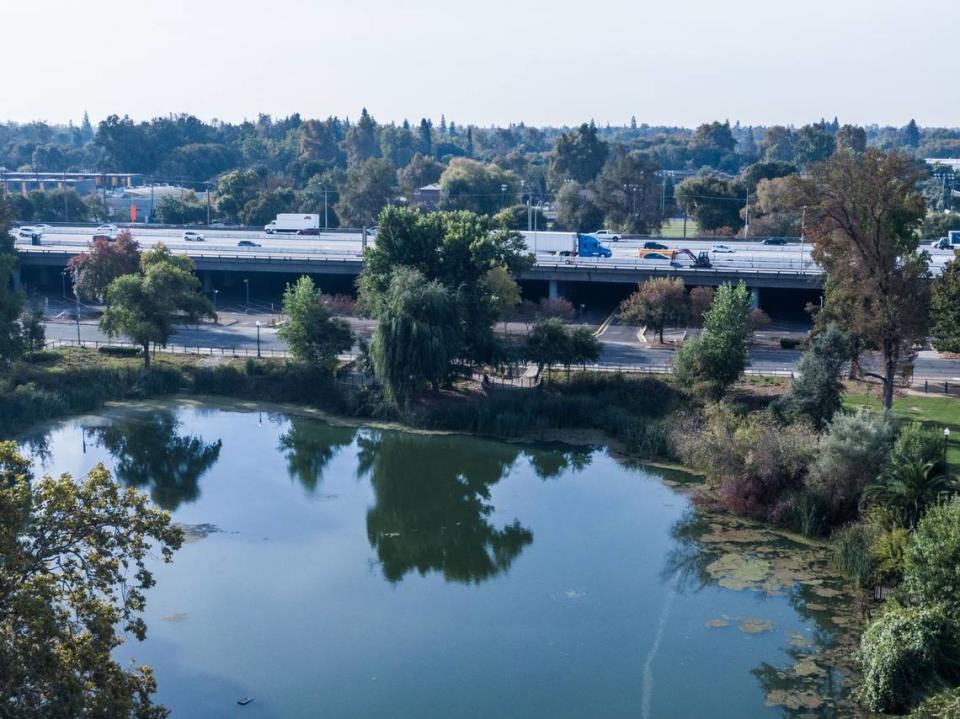
But city and county officials moved forward with the plan. The Sacramento Bee reported in May 1961 that the highway committee of the city-county chamber of commerce gave “top priority billing to the proposed construction of an east-west freeway between W and X Streets, coupled with an additional Sacramento River bridge.” It was completed in 1971.
Sacramento historian William Burg said Highway 50 became a hulking barrier between whiter, more affluent neighborhoods — Land Park, Curtis Park and East Sacramento — and burgeoning multiracial and Black communities — Southside, Richmond Grove, Newton Booth and Oak Park. The Sacramento African American Experience History Project described how the isolation caused by Highway 50 helped gut Oak Park’s vibrant Black commercial sector in the late ’60s and ’70s.
And, as Burg recounted in “Sacramento Renaissance,” the highway also tore through a Japanese business district. The capital’s Japanese community had already been driven out by redevelopment in the 1950s when the Sacramento City Council decided to construct the Capitol Mall and bulldoze an eight-block Japantown.
A love lost on the freeway
Fix 50 plans to wrap up by summer 2025. The lane splits will continue until the end, in various parts of the highway, and in sections, there will be no shoulder — the road conditions that led to Ronald Fitzgerald’s fatal wreck.
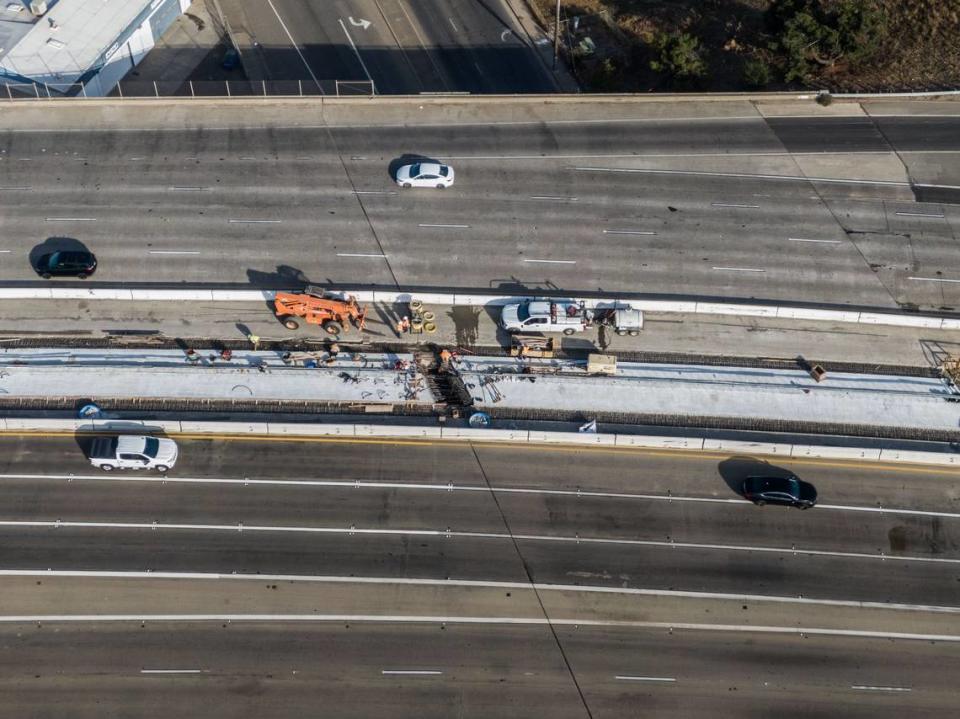
His wife, Tracey Young Fitzgerald, is suing the state and Caltrans over his death. She declined to be interviewed for this story, citing the ongoing lawsuit.
But before her husband’s death, she wrote about him on Facebook.
“Living with the person you love is not what everyone thinks it is,” she wrote. Her husband — she called him Ron — hogged the blankets in their small bed; he ate her snacks; they fought sometimes. But living with him, she wrote, “is, despite all of those things, the one thing you look forward to every day. It’s coming home to the same person everyday that you know loves and cares about you. … It’s when your love has an emotional breakdown and you lay on the floor with your love and hold them and tell them that everything is going to be okay, and they believe you.”
With Ron, she found “a love that people spend their whole life looking for.”
She lost her love to a freeway construction project whose aim is partly to reduce traffic.
Handy said the research shows that by 2035, the traffic will be just as bad as it was before Caltrans added the new lanes.
That’s the year Ron would have turned 67.

